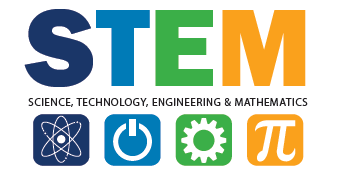| Image Courtesy of the US Department of Education |
In reality, creating a well-rounded education is extremely valuable to any student who wishes to succeed in higher education, or in their career. For quite a few years, school districts have been pushing STEM education: Science, Technology, Engineering, and Math education. The goal of this program is to create innovative and critically-thinking students who are able to make connections between all aspects of their lives and who will become lifelong learners. Additionally, STEM students will be prepared to pursue careers that involve science, technology, engineering, and math, which are fast-growing fields of work that are necessary for the success of our country.
On March 23, 2015 at the White House Science Fair, President Barack Obama stated, "[Science] is more than a school subject, or the periodic table, or the properties of waves. It is an approach to the world, a critical way to understand and explore and engage with the world, and then have the capacity to change that world." President Obama went on to articulate that educating students in STEM fields creates students with the potential to help maintain the United State's status as a global leader. These students will have the capacity to solve the world's most pressing problems.
 |
| Image Courtesy of Washington State University |
According to the United States Department of Education, "In a world that's becoming increasingly complex, where success is drive not only by what you know, but by what you can do with what you know, it's more important than ever for our youth to be equipped with the knowledge and skills to solve tough problems, gather and evaluate evidence, and make sense of information." The Department of Education asserts that these valued qualities are best taught through STEM education, and that classes in all STEM fields should be readily available to students.
| Photo Courtesy of Envision Science Academy |
A statement from RISD affirms, "art and design education teaches flexible thinking, risk-taking and creative problem solving needed to solve today's most complex and pressing challenges--from healthcare to urban revitalization to global warming." Innovators and creative thinkers are absolutely essential to the future of our nation, and all children should have access to music and art classes to supplement their education in science and math.
According to the STEAM official website, many other nations in Asia and Europe view arts education as "essential" for the success of their economy. They implement programs that put arts education very high on their priority list.
For example, the organization Creatiquity states that Australia's Curriculum, Assessment, and Reporting Authority (ACARA) designates the arts as five distinct disciplines: visual art, music, dance, theater, and media arts. In China, music and fine arts classes are required for two hours a week in elementary school. Germany's government, specifically the Ministries of Education and Family Affairs spends $12.6-$14 million dollars on the arts each year. As the US continues to decline and fall behind other countries in innovation, we need to seriously consider what needs to be changed.
Quite possibly, the United States will begin to consider changes in its education system that will begin to include the arts as a main discipline, fostering more creativity and innovation, which could pay dividends in the future.
yay art! I'm not really a science/math person, but I love the idea of incorporating art and making sure that kids understand the value of it
ReplyDeleteyay art! I'm not really a science/math person, but I love the idea of incorporating art and making sure that kids understand the value of it
ReplyDeleteI've never heard about the movement for STEAM, but I think it's a great idea. Like you stated in this post, arts works a side of the brain that just doing classwork doesn't. Participating in the arts and working the creative side of your brain can only have positive effects.
ReplyDeleteI think it's important to balance both arts education with scientific education, as both contribute to the development of a well-rounded student. While the U.S. is supporting STEM, hopefully they will keep in mind the importance of arts classes as well.
ReplyDeleteI think the best education is a well-rounded one where students are encouraged to explore themselves and their options. Unfortunately, in college, you are forced to make a choice between STEM and the arts (to some extent). I hope that we can find more of a middle ground in both lower and higher education systems.
ReplyDeleteLike Lisa said, a well rounded education is the best one, but there does come a point when we need to master one thing instead of being a decent jack of all trades (unless you want to be a master jack of all trades of course). But at the same time, in order master anything you should be able to pull from anywhere and everywhere to solve problems and I agree, having the arts could really increase creativity and innovation. Plus the acronym STEAM seems better than STEM.
ReplyDeleteI think it is important to be well rounded but what about the people who aren't artistic or doesn't like math would writing be considered an art?
ReplyDelete